Top 10 Camping Sites in Arizona You Need to Visit in 2024: Your Ultimate Outdoor Guide
- March 27, 2024
- 0 comment
Explore the best camping sites in Arizona for 2024! Discover serene landscapes & outdoor adventures at top spots. Perfect for nature lovers. Arizona, with its vast deserts, towering canyons, and lush forests, offers some of the most diverse camping experiences in the United States. Whether you’re seeking a serene getaway under the stars or an adventure-packed excursion, the Grand Canyon State has something for everyone.
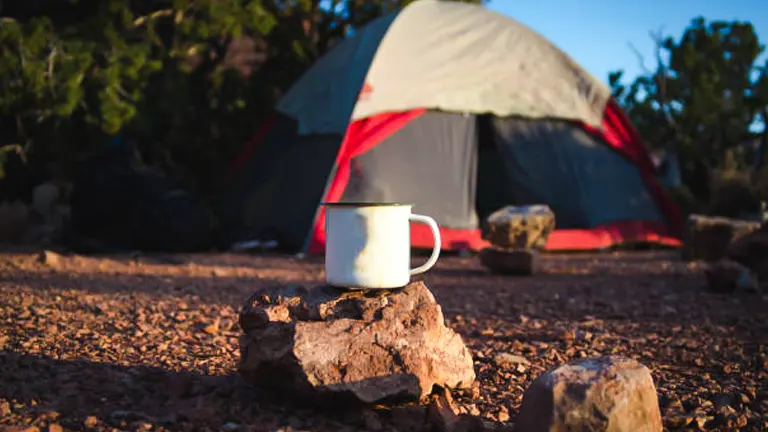
As we venture into 2024, it’s time to explore the top 10 camping sites in Arizona that promise unforgettable landscapes and experiences. From the iconic views of the Grand Canyon to the hidden gems in the Petrified Forest, prepare to embark on a journey through some of the most breathtaking outdoor destinations. Pack your gear and get ready to create lasting memories in the heart of the American Southwest.
List of Top 10 Camping Sites in Arizona You Need to Visit in 2024
- South Rim Campgrounds at The Grand Canyon National Park
- Oak Creek Canyon Camping in Sedona
- Backcountry Camping in Petrified Forest National Park
- Camping at Havasu Falls within Havasupai Reservation
- Camping Adventures in Monument Valley Navajo Tribal Park
- Dispersed Camping in Coconino National Forest’s Wilderness
- Wahweap Campground: Lakeside Camping at Lake Powell
- Catalina State Park Campgrounds: Desert Camping Near Tucson
- Forest Camping in Kaibab National Forest
- Wilderness Camping in Saguaro National Park’s Backcountry
Criteria for Selection: Why These 10 Camping Sites?
The selection of the top 10 camping sites in Arizona for 2024 was guided by specific criteria designed to ensure that each site offers a unique and memorable experience for campers. These criteria focus on aspects that enhance the educational, informative, and recreational value of camping. Here’s a closer look at the factors considered:
- Ecological Diversity: Arizona is home to a wide array of ecosystems, from desert landscapes and lush riparian areas to alpine forests. The chosen sites showcase this diversity, offering campers the opportunity to experience and learn about the state’s rich ecological variety. Each site was selected for its ability to provide a window into the unique flora, fauna, and geological features of its respective environment.
- Opportunities for Nature Education and Conservation Awareness: Campsites were chosen based on their potential to educate visitors about the natural world and the importance of conservation. This includes parks with visitor centers, guided tours, and interpretive trails that provide insights into local wildlife, plant life, and the area’s natural history.
- Recreational Accessibility: A key factor in the selection process was the accessibility of recreational activities suitable for a range of skill levels and interests. This includes hiking, bird watching, stargazing, and water-based activities. Sites that offer a variety of accessible outdoor activities received priority to ensure a well-rounded camping experience.
- Environmental Impact and Sustainability: The sites on this list encourage and facilitate low-impact camping practices. This includes locations that have implemented measures to protect the environment and wildlife, such as designated camping areas, fire restrictions, and leave-no-trace principles. Emphasis was placed on sites that promote sustainable tourism practices, ensuring that they remain pristine for future generations.
- Camping Amenities and Facilities: While the focus is on connecting with nature, the availability of basic amenities such as clean water sources, restrooms, and safe camping spots was also considered. This ensures that even those new to camping can have a comfortable and safe experience, making the great outdoors accessible to everyone.
Top 10 Camping Sites in Arizona you Need to Visit in 2024
1. South Rim Campgrounds at The Grand Canyon National Park

The Grand Canyon, a world-renowned wonder, offers more than just breathtaking views from its rims. The South Rim, accessible year-round, is a haven for campers looking to immerse themselves in the canyon’s grandeur. Here, the Mather Campground and Desert View Campground provide family-friendly options with the necessary amenities. While camping, you’re poised at the edge of one of the earth’s most magnificent landscapes, with sunrise and sunset transforming the canyon’s hues into a spectacle of colors.
- Best Times to Visit: Late spring and early fall offer the most pleasant weather, though summer’s allure brings larger crowds.
- Permits and Fees: Advance reservations are highly recommended, especially during peak seasons. A National Park pass is required for entry, alongside camping fees.
- Tips for Campers: Book early, pack for varying temperatures, and be prepared for wildlife encounters. Explore beyond the campgrounds to find quiet overlooks and hiking trails less traveled.
2. Oak Creek Canyon Camping in Sedona
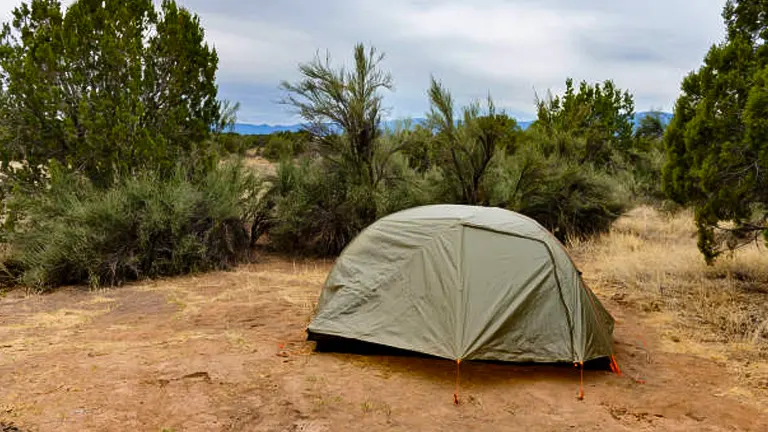
Located among the red sandstone formations of Sedona, Oak Creek Canyon is a paradise for campers seeking both adventure and tranquility. The area is famed for its stunning scenery, vibrant arts community, and a plethora of hiking trails that range from easy walks to challenging treks. Camping in Oak Creek Canyon, particularly at the Cave Springs Campground, puts you in close proximity to natural swimming pools and lush greenery, a stark contrast to Arizona’s desert landscapes.
- Activities and Facilities: Hiking, fishing, and swimming are popular. The campgrounds offer amenities like restrooms, picnic tables, and fire rings.
- Seasonal Considerations: Spring and fall are ideal, with comfortable temperatures and fewer crowds. Summer can be hot, so staying hydrated and cool is crucial.
- Environmental Preservation Tips: Adhere to Leave No Trace principles to protect the creek’s ecosystem. Use designated camping spots and avoid using soaps or lotions in natural water sources.
3. Backcountry Camping in Petrified Forest National Park
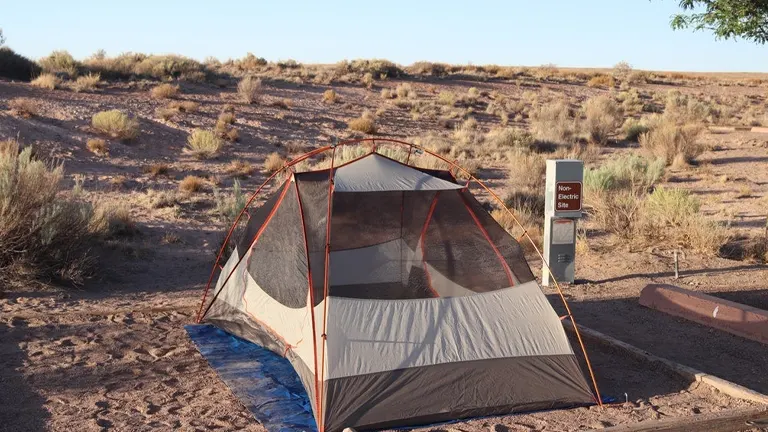
Venture into the heart of Arizona’s wilderness to find the Petrified Forest National Park, a landscape teeming with ancient, fossilized trees that have turned to stone over millions of years. This park is not only a scientific wonder but also a hiker’s paradise, offering vast, open spaces that feel like stepping back in time.
- Unique Park Rules: The Petrified Forest is one of the few national parks that allows backcountry camping within its wilderness areas, giving adventurers a rare opportunity to spend the night under a blanket of stars amidst a landscape filled with history. However, permits are required and can be obtained at the park’s visitor center.
- Preserving the Site: Visitors are reminded that while it is tempting to take a piece of petrified wood as a souvenir, preserving the natural and historical integrity of the park is paramount. All flora, fauna, and petrified wood are protected by federal law against removal.
4. Camping at Havasu Falls within Havasupai Reservation
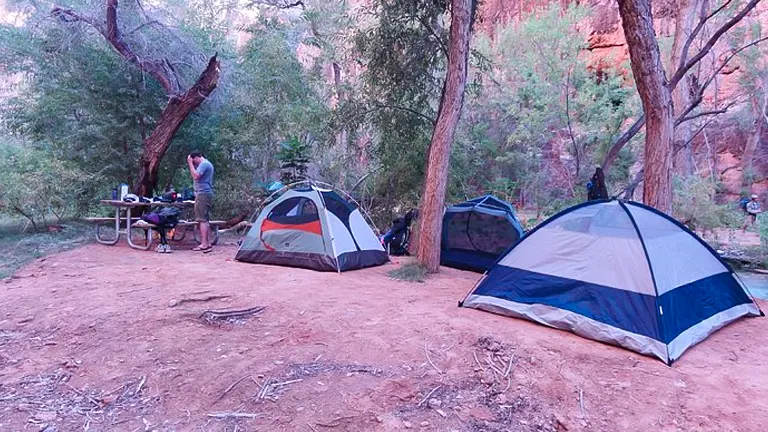
Located in the Havasupai Indian Reservation, Havasu Falls is a breathtaking oasis in the desert, featuring turquoise waters and dramatic waterfalls that cascade into tranquil pools. The journey to Havasu Falls is a testament to the secluded beauty of this site, requiring a 10-mile trek that rewards hikers with unparalleled natural beauty.
- Permit Process: Access to Havasu Falls and its campground is highly sought after, with permits required and often booked months in advance. Planning ahead is crucial, as the number of visitors is limited to protect the area’s natural beauty.
- Preparation Tips: Pack light but bring essentials, including water, food, and camping gear. The trek is challenging, and preparation is key to enjoying this once-in-a-lifetime camping experience.
5. Camping Adventures in Monument Valley Navajo Tribal Park
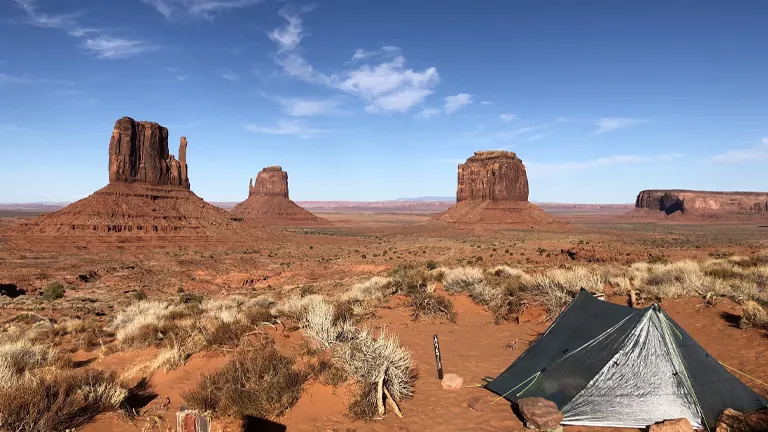
Monument Valley offers one of the most iconic images of the American West, with towering sandstone buttes and vast, open skies. Camping here is an opportunity to connect with the profound silence and beauty of the Navajo lands, offering a peaceful retreat for those seeking solace in nature.
- Campsite Amenities: The View Campground offers facilities that blend with the natural environment, providing a comfortable base from which to explore the surrounding landscape. Each site offers a unique perspective of the valley’s famous buttes.
- Engaging with Navajo Culture: Visitors are encouraged to respect the land and its people by engaging with the culture through guided tours and by supporting local Navajo artisans. Understanding the deep spiritual significance of the land adds an enriching layer to the camping experience.
6. Dispersed Camping in Coconino National Forest’s Wilderness
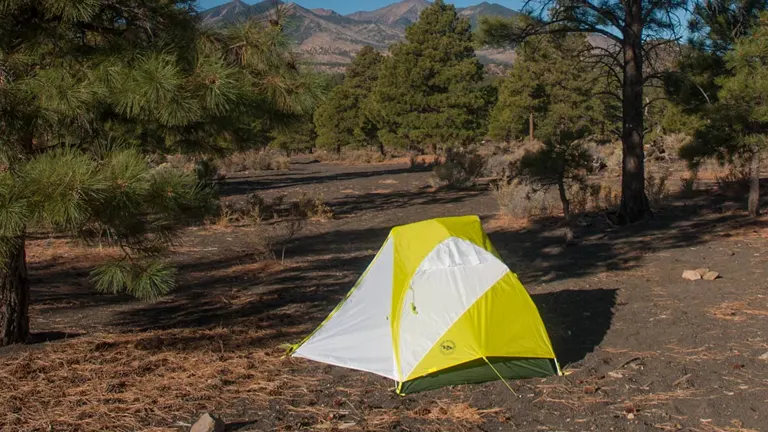
For those seeking a more rugged and intimate connection with nature, dispersed camping in Coconino National Forest offers an unparalleled opportunity. This vast landscape varies from red rock formations and alpine tundra to dense forests, providing a backdrop for a truly customizable camping experience.
- Explaining Dispersed Camping: Dispersed camping refers to camping outside of designated campgrounds, allowing for greater solitude and a closer connection to the wilderness. While no amenities are provided, the beauty of the natural setting more than compensates for the lack of facilities.
- Finding the Best Spots: Research and preparation are key. Utilize forest maps and seek out areas that are not only beautiful but also respectful of the environment. Look for previously used sites to minimize your impact.
- Safety Tips and Wildlife Encounters: Be prepared for self-sufficiency and emergencies. Bring sufficient water, navigate carefully, and know how to store food securely to avoid attracting wildlife.
7. Wahweap Campground: Lakeside Camping at Lake Powell
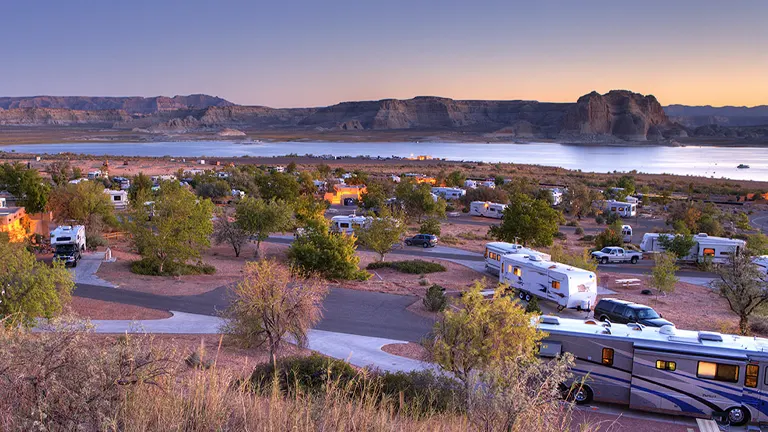
Lake Powell, a man-made reservoir on the Colorado River, offers a unique camping experience with its stunning water-based landscapes. The Wahweap Campground near the lake’s shores provides easy access to water activities and breathtaking views of the surrounding rock formations.
- Activities on Water and Land: From boating and fishing to hiking and exploring nearby slot canyons, Lake Powell serves as a water lover’s paradise with the comforts of a well-equipped campground.
- Campground Facilities and Booking Advice: Wahweap Campground offers a range of amenities, including RV hookups, showers, and laundry facilities. Reservations are recommended, especially during peak seasons, to secure a spot with the best views.
- Conservation Efforts: As Lake Powell is subject to fluctuating water levels and environmental concerns, campers are encouraged to practice water conservation and leave no trace principles to help preserve this unique ecosystem.
8. Catalina State Park Campgrounds: Desert Camping Near Tucson
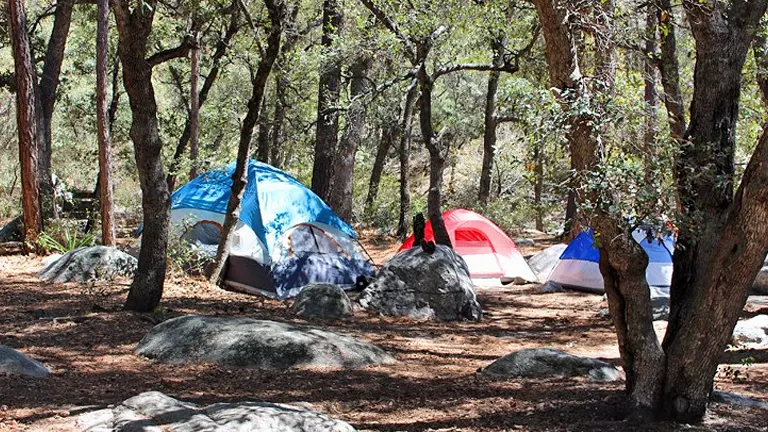
Located at the base of the Santa Catalina Mountains, Catalina State Park is a haven for wildlife enthusiasts, hikers, and those seeking the tranquility of the Sonoran Desert. The park offers a variety of trails, ranging from easy walks to challenging hikes, with the chance to spot over 150 bird species.
- Campsite Details and Amenities: The park’s campgrounds provide electric and water hookups, making it suitable for both tents and RVs. Picnic tables, BBQ grills, and restrooms with showers add comfort to the camping experience.
- Seasonal Events and Wildlife Spotting Opportunities: Spring brings a spectacular display of wildflowers, while fall and winter offer cooler temperatures ideal for hiking and exploring. The park’s diverse habitats make it a fantastic spot for bird-watching and wildlife photography.
9. Forest Camping in Kaibab National Forest
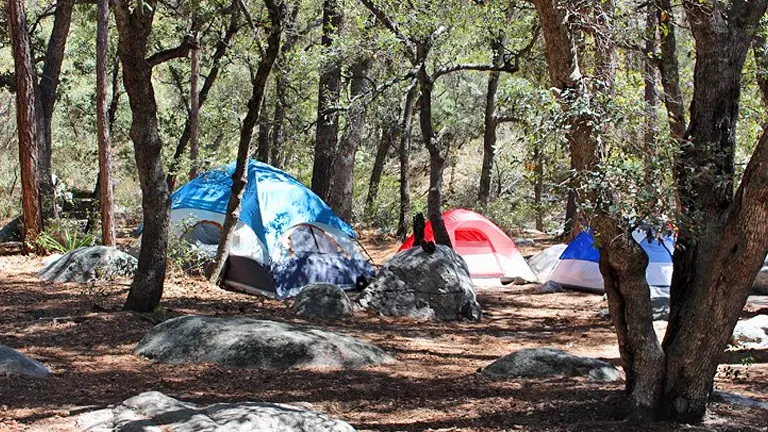
Bordering the north and south rims of the Grand Canyon, Kaibab National Forest encompasses a vast expanse of diverse landscapes, from dense ponderosa pine forests to sprawling meadows and towering cliffs. It’s a destination that appeals to those who find solace in the forest’s quiet and the night sky’s clarity.
- Variety of Landscapes and Camping Experiences: The forest offers numerous camping opportunities, including developed campgrounds and backcountry spots for those seeking a more secluded experience. Jacob Lake Campground is particularly popular for its proximity to the North Rim and its family-friendly atmosphere.
- Recommendations for Family Camping and Group Visits: Many sites are equipped with picnic tables, fire rings, and nearby access to hiking trails, making them ideal for family outings. Group campsites are also available, accommodating larger parties looking to enjoy the wilderness together.
- Guidelines for Forest Conservation and Fire Safety: Given the forest’s susceptibility to wildfires, it’s crucial for visitors to adhere to fire safety regulations. This includes using designated fire rings and ensuring all fires are completely extinguished before leaving the site.
10. Wilderness Camping in Saguaro National Park’s Backcountry
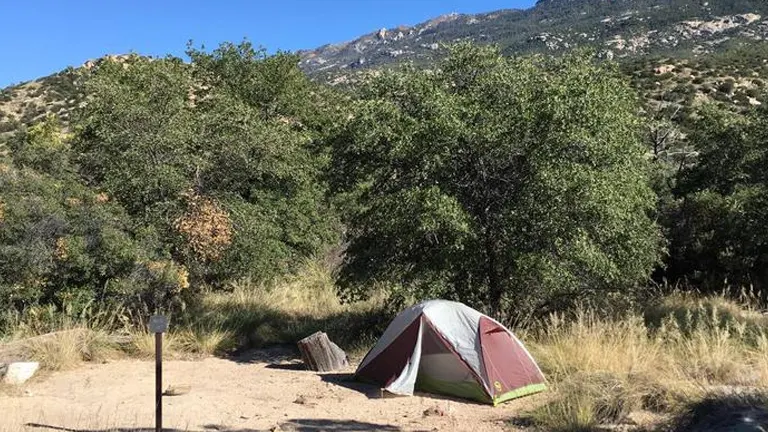
Divided into two districts that frame the city of Tucson, Saguaro National Park is named after the giant saguaro cactus that dominates its landscape. This park offers a unique glimpse into the life of the Sonoran Desert, providing a backdrop for both educational exploration and peaceful contemplation.
- Campground Specifics and Best Times to Visit: While the park does not offer traditional camping grounds, backcountry camping is available in the Rincon Mountain District for those willing to hike in. The cooler months from November to April are the best times to visit, offering pleasant temperatures for hiking and exploration.
- Night Sky Viewing and Photography Tips: Saguaro National Park is recognized for its dark skies, making it an excellent spot for stargazing and astrophotography. Campers are encouraged to bring telescopes or cameras to capture the stunning night sky, enhanced by the silhouette of saguaro cacti.
Conclusion
Arizona’s varied landscapes deliver unmatched camping experiences. Explore the Grand Canyon’s vastness, Lake Powell’s tranquility, and Saguaro National Park’s iconic cacti. Each location invites a unique connection with nature. Engage in thrilling hikes, enjoy tranquil starlit nights, or relish the outdoor life’s pure simplicity.
FAQs
- What’s the best season for camping in Arizona to avoid the crowds but still enjoy pleasant weather?
Late spring and early fall are ideal times. Temperatures are comfortable, and the tourist crowds of summer and winter have thinned out, offering a quieter experience. - How do I prepare for wildlife encounters while camping in Arizona’s diverse ecosystems?
Research the wildlife native to your camping area. Always keep food stored securely, maintain a clean campsite, and familiarize yourself with safety tips for encountering specific animals like snakes or bears. - Are there any unique geological features I should look out for while camping in Arizona?
Yes, many. From the petrified wood in Petrified Forest National Park to the stunning red rock formations in Sedona, Arizona’s landscape is a geologist’s dream. Don’t miss exploring the diverse geological wonders each site offers. - What are the most important Leave No Trace principles to follow in desert camping environments?
Minimize water usage, pack out all trash, stay on designated trails to protect fragile desert plants, and avoid disturbing wildlife. The desert ecosystem is particularly sensitive to human impact. - Can I find campgrounds in Arizona that offer dark sky experiences for stargazing?
Absolutely. Many areas in Arizona are designated as Dark Sky Places, including parts of the Grand Canyon and Sedona. These sites offer exceptional stargazing opportunities away from light pollution. - What advice do you have for first-time campers in Arizona’s unique climate?
Stay hydrated, protect yourself from the sun with hats and sunscreen, and dress in layers to adapt to temperature changes. Also, be aware of monsoon season in late summer, which can bring sudden weather changes. - Are campfires allowed in Arizona’s campgrounds, or are there restrictions?
Campfire regulations vary by location and time of year, primarily due to wildfire risk. Always check the latest guidelines for your specific camping site and follow any fire restrictions or bans. - What’s the best way to find lesser-known, less crowded camping sites in Arizona?
Research and local knowledge are key. Utilize online forums, social media groups dedicated to camping in Arizona, and resources from the National Forest Service or Bureau of Land Management to discover hidden gems.
Explore our dedicated section on national forests and state parks to uncover hidden gems and outdoor wonders.
We can’t wait to read about your incredible camping experiences! Share your tales, tips, and memorable moments in the comments below. Let’s create a community of campers and nature lovers dedicated to enjoying and safeguarding these spectacular outdoor havens.

Benjamin Brooks
Forestry AuthorGreetings! I'm Benjamin Brooks, and my journey over the past 15 years has revolved around the fascinating realms of content creation, expertise in snow clearing, and the intricate world of lumberjacking and landscaping. What began as a simple curiosity about the natural world and heavy machinery has evolved into a passionate profession where my love for crafting words intertwines seamlessly with my lumberjacking and garden skills.












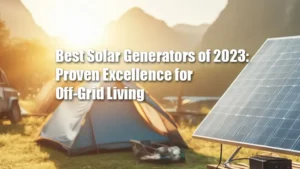
Leave your comment